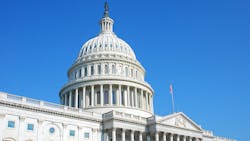The 2024 elections have ushered in a seismic shift in Washington, with a new president and Republican majorities in both the House and Senate. As the dust settles, questions remain about what this means for the future of energy policy.
Few areas stand to be impacted as profoundly as the electric grid and the urgent need for expanded transmission. Traditionally, Republicans and Democrats have supported additions to our energy infrastructure, including transmission. More recently, however, debate over policies designed to facilitate transmission investments have become entangled with discussions about the generation resource mix and the clean energy transition.
Beyond Clean Energy
Certainly, some of the best wind and solar resources in this country are located in remote areas and require a robust transmission system. But if we simply characterize transmission as a facilitator of clean energy policies, we are missing the fact that more transmission is desperately needed to ensure electric affordability and reliability.
For nearly two decades, electricity demand in the U.S. was flat, or growing minimally. That era is over. Demand is expected to increase five percent annually, with some regions experiencing even faster growth primarily due to:
- surging U.S.-based manufacturing.
- expanded data center and Artificial Intelligence operations.
- electrification.
This will require substantial additions of new electric generation capacity. However, this growth depends on an electric grid that is already too congested to efficiently move power when and where it is needed. Moreover, these new generators face lengthy delays connecting to the grid in large part because there is insufficient transmission capacity to accommodate them. Despite numerous efforts to reform the generator interconnection process, these delays will persist unless more transmission is built.
Resilience in the Face of Extreme Weather
Transmission is not only a solution to congestion, it is also a cornerstone of grid resilience. More frequent and intense extreme weather events are impacting utilities’ abilities to keep the lights on. Smoke from catastrophic wildfires in the West threatens transmission lines, category five hurricanes batter poles and wires, and extreme heat and cold are pushing the grid to the brink.
Expanding transmission capacity enhances redundancy, enabling operators to keep the lights on even when parts of the system fail. As we witnessed during Winter Storm Uri, regions with available transmission capacity were able to import power from less affected areas, mitigating widespread outages. The ERCOT portion of Texas, in comparison, was not similarly connected and experienced days-long blackouts. A recent NERC study on interregional transmission underscores this point – better connections between regions enhance grid reliability and resilience in the face of growing threats.
The new Administration and Congress should make transmission infrastructure a top priority. FERC is already leading the way through its landmark Order No. 1920, which requires regions to produce 20-year transmission plans that identify the projects that will be most needed.
Order No. 1920 also grants states an unprecedented role in cost allocation for regional transmission projects. Utilities must engage in a process for state input on the ex-ante cost allocation method as well as a process that allows states to customize cost allocation for specific projects or portfolios of projects after they are identified.
Clearing the Path
Permitting reform is equally critical. FERC already has backstop siting authority to approve certain transmission projects when states fail to act or reject projects, but this process should be streamlined to allow FERC to act more quickly on critical projects. Additionally, permitting reforms must expedite the siting of transmission projects that traverse federal land and establish interregional planning requirements with fair and reasonable cost allocation frameworks, such as those proposed in the Manchin-Barrasso permitting bill.
While substantial investment in new transmission infrastructure is essential, it takes time to add new capacity. To address immediate reliability challenges, Congress, FERC and the Department of Energy need to implement programs that encourage and require transmission owners to invest in grid-enhancing technologies, such as dynamic line ratings and reconductoring. These innovations can squeeze more out of existing transmission lines and deliver much needed near-term relief.
We depend on electricity for every aspect of modern life, from daily conveniences to a robust economy and national security. The new Administration and Congress must prioritize creating a transmission grid capable of meeting these demands. A reliable, affordable, and resilient grid is not just an energy issue – it is a national imperative.
This perspective first appeared in the WIRES Fall 2024 Newsletter
About the Author
Rich Glick
Rich Glick is principal at GQS New Energy Strategies and former FERC chairman.
